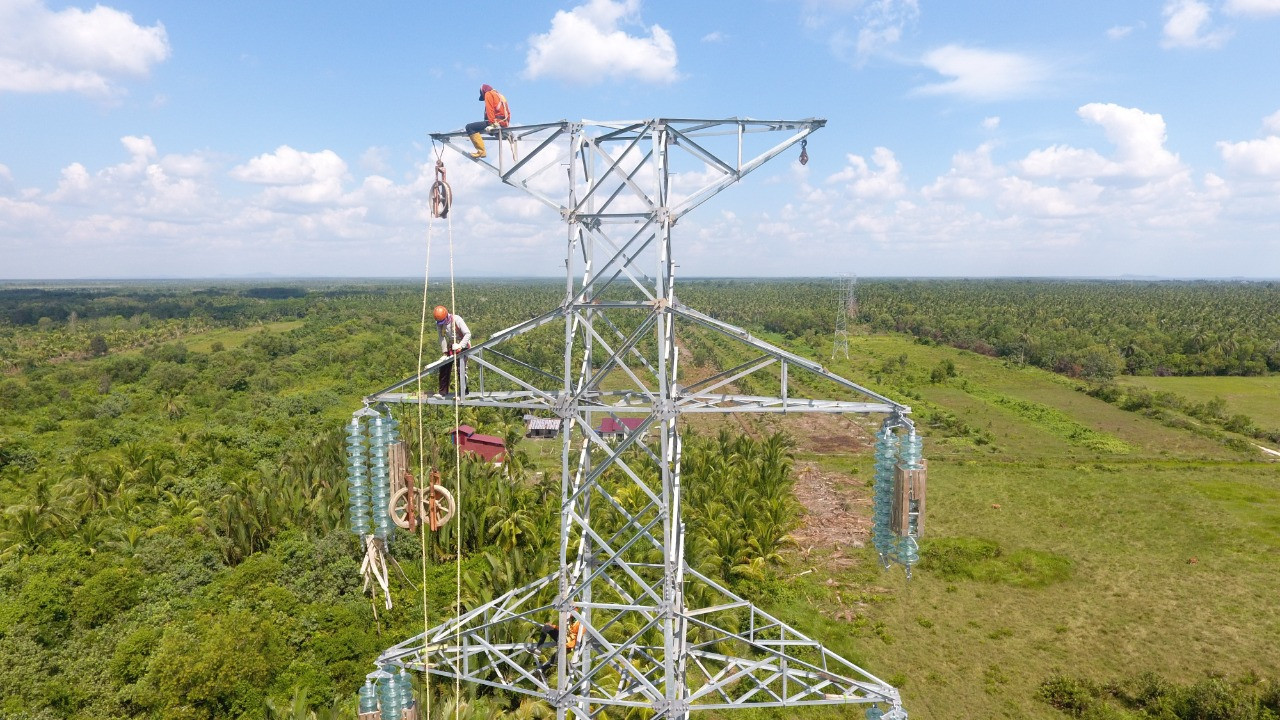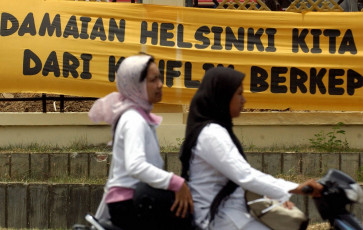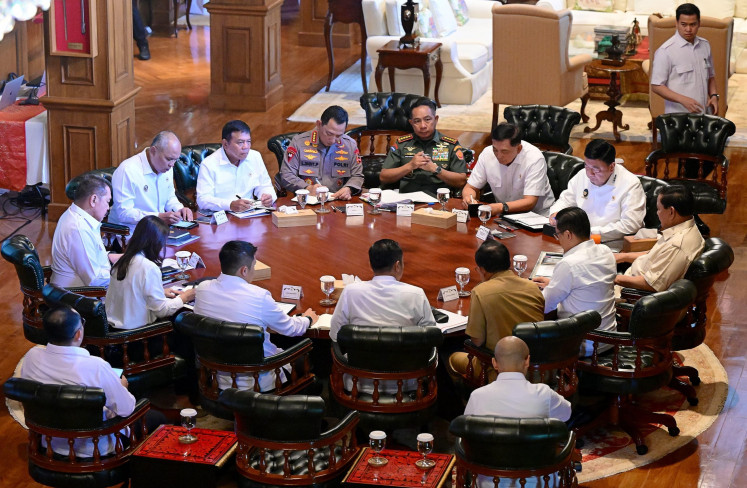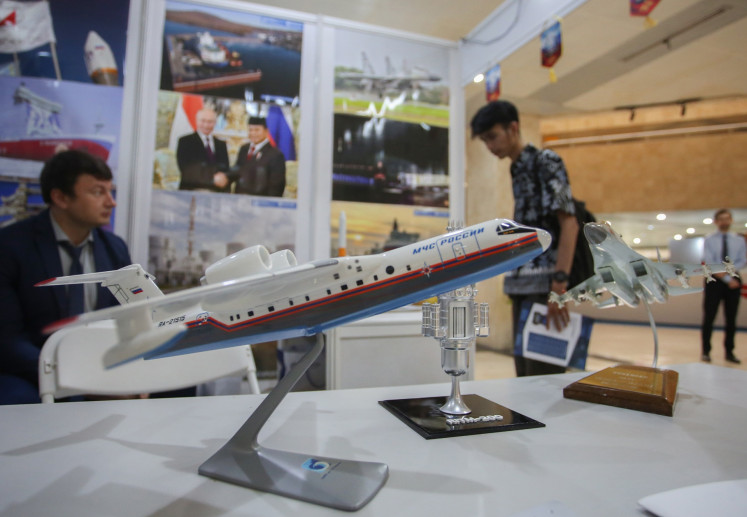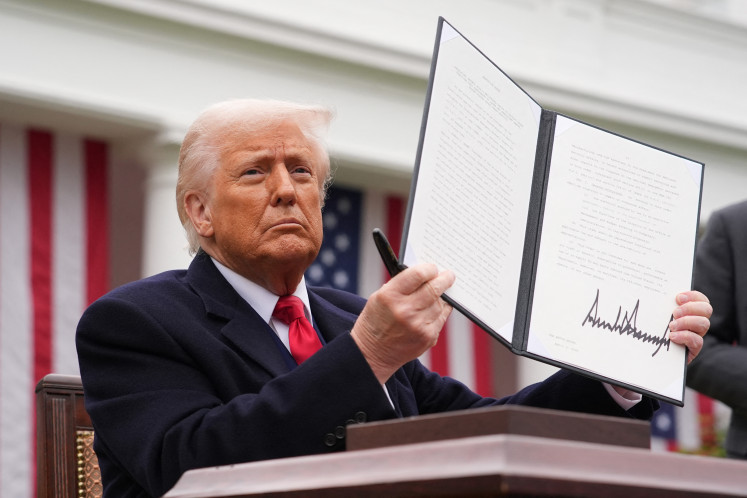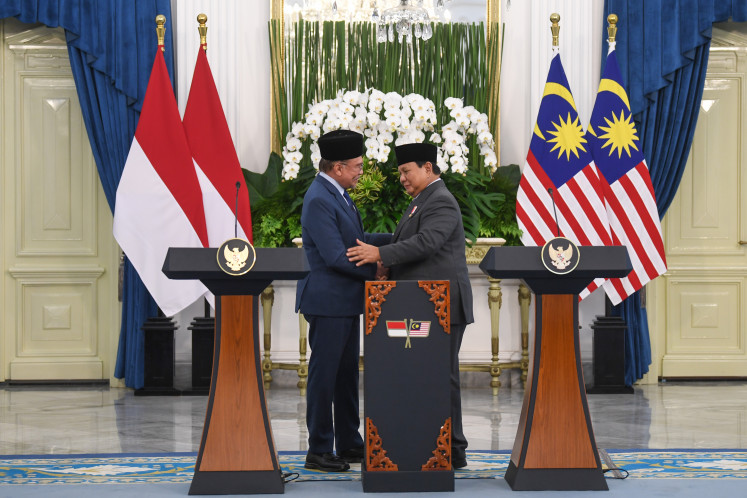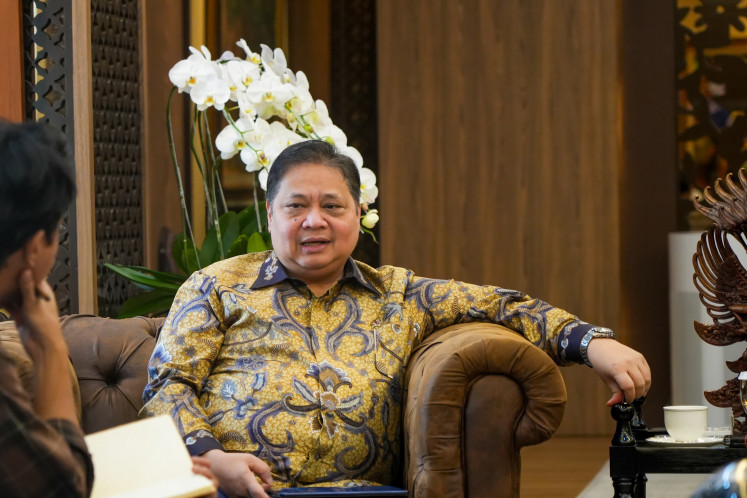Popular Reads
Top Results
Can't find what you're looking for?
View all search resultsPopular Reads
Top Results
Can't find what you're looking for?
View all search resultsCOP28: Turning point or still chatter?
The main demand centers are predominantly located in Java, but the richest clean energy sources lie elsewhere in islands such as Sumatra and Kalimantan.
Change text size
Gift Premium Articles
to Anyone
T
he stifling heat spreading through Southeast Asia marks the familiar return of El Niño climate phenomenon. Indonesia once again finds itself bracing against the exacerbated effects of this climate phenomenon, which has worsened due to global warming.
We are now at the crossroads of “now or never” as we continue to see the very real effects of climate change. Every fall in CO2 emissions counts because the reality is worrying: the world is not making good enough progress.
In 2022, global emissions reached a record high of 36.8 billion tonnes of CO2. And global energy demand is expected to surge by approximately 25 percent by 2030.
Achieving net-zero emissions requires a profound shift in how we perceive and utilise energy—it is not just a commodity but the bedrock of social development, economic growth, and prosperity.
In Indonesia, the ratio of electrified households to the total number of households has reached 99.63 percent, a commendable milestone.
This brings us then to the next frontier – ensuring that all communities have access to both clean and reliable electricity.
Indonesia has demonstrated its dedication to the climate cause with the Bali Energy Transitions Roadmap for Group of 20 nations. However, the country is still heavily dependent on coal, which comprised 60 percent of its electricity generation in 2022. More needs to be done and today, we have clarity on what we must work towards.
As the 28th United Nations climate conference (COP28) approaches, Indonesia urgently needs to address the following critical factors to ensure a successful energy transition.
First, promoting clean energy generation.
We cannot achieve a net-zero future without viable and long-term clean energy generation. One way to start immediately is by using lower emission technology and investing in efficiency upgrades that reduce overall energy consumption.
Indonesia needs to diminish its reliance on coal for power generation and instead, shift to gas-fired generation using hydrogen-capable gas turbines. Hydrogen holds great promise as a clean energy source due to its low environmental impact and versatile applications, but cost-effectiveness persists as a key challenge.
The truth is, driving meaningful climate action forward will require significant spending. COP28 president-designate Sultan al-Jaber puts the estimate at US$4 trillion to $5 trillion annually. These investments will need a business case, meaning that energy cannot continue to get cheaper.
COP28 bears the responsibility to build upon previous initiatives and establish a comprehensive framework that will drive climate finance and enable the necessary investments for a sustainable and resilient future.
Already, Indonesia is taking steps to realize its clean energy ambitions through international investments and partnerships. The country plans to finalize details of its Just Energy Transition Partnership (JETP) by COP28, a new model for international cooperation on country-specific efforts to combat climate change. Only the second country in the world to receive a JETP, this initiative will see an initial $20 billion mobilized over the next three to five years toward Indonesia’s renewable energy adoption.
Second, developing a robust grid infrastructure.
The urgency to develop new robust grid infrastructure is at an all-time high especially for an archipelagic country like Indonesia. Currently, not all of its islands are fully connected to the grid. The main demand centers are predominantly located in Java, but the richest clean energy sources lie elsewhere in islands such as Sumatra and Kalimantan.
An upgraded grid infrastructure allows for greater interconnectivity, grid stability, and increased penetration of renewables across all islands, delivering universal energy access. For instance, a microgrid system established on the remote island of Sangihe now supports the electrification of 1,685 houses and 6,437 residents.
However, this is easier said than done. Fortifying the grid requires a significant ramp-up of resources, factories, and infrastructure to meet the ambitious goals. Given the immense scale of the endeavor, it is crucial to establish effective boundary conditions for energy projects. It is not just about easier, faster, and more predictable permitting procedures but also more standardized equipment and concepts.
Third, incorporating the digital touch.
About 45 percent of all emissions savings in 2050 will come from technologies that have yet to reach the market. To accelerate innovation, it is important to consider how innovative technologies are commercialized in the energy market. For innovation and digitalization to thrive, we must define how a risk and reward profile can be distributed fairly.
Digitalization will play a critical role in making processes more energy-efficient and optimized. For instance, real-time monitoring of energy consumption serve as timely feedback for companies to adjust their usage accordingly.
Advanced analytics and machine learning algorithms also help to process large volumes of data to identify patterns, predict energy demand, and optimize asset performance. Overall, this leads to more proactive and cost-effective maintenance practices.
At the same time, industrial cybersecurity cannot be overlooked. As more devices and equipment go digital, cybersecurity for operational technology (OT) will be key to safeguarding critical energy infrastructure from cyberattacks.
As we count the days down to COP28, so too is the timer ticking on the window we have to save our planet. Admittedly, the complexities of the challenges that COP28 is attempting to address cannot be underestimated, but neither can we afford to waste the immense opportunity that the platform provides to make actual progress if executed right.
COP28 will bring together a diverse array of stakeholders — let us make the most of the occasion and ensure not just a productive discussion, but for decisive action to be taken in achieving a successful energy transition for Indonesia.
***
The writer is managing director of PT Siemens Energy Indonesia. The views expressed are his own.

